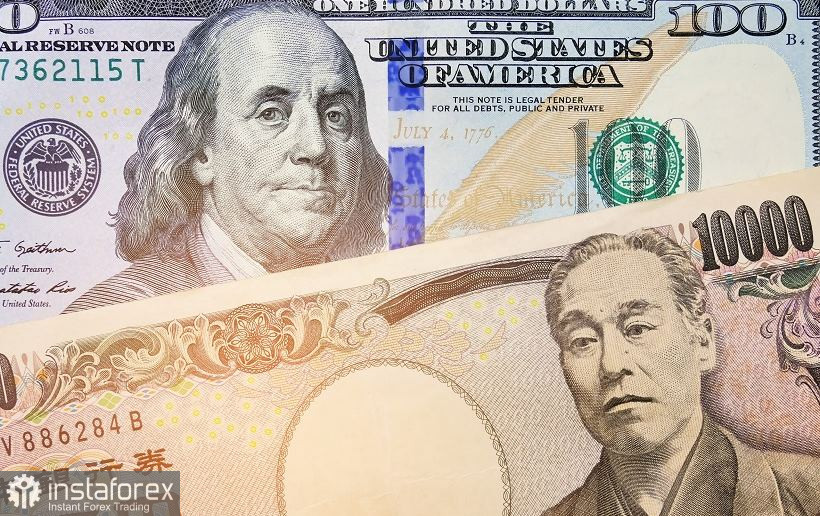The dollar/yen pair, apparently, has designated its "price ceiling." At the end of April, USD/JPY buyers entered the area of the 131st figure, but could not gain a foothold there, retreating a few steps lower, to the area of 128–130. It cannot be said that sellers managed to reverse the upward trend—buyers are still besieging price heights and even taking assault actions to consolidate above the 131.00 mark.
The day before yesterday, the pair again updated the 20-year price high, marking 131.33. But, despite all the efforts of USD/JPY bulls, they are unable to stay on a kind of price Everest. Sales look too attractive here and dollar bulls behave too uncertainly, which reduce their activity as soon as the pair crosses the 131.00 mark.

Clearly, buyers of the pair need a good news story to continue their upward tour. Such an occasion could be today's inflation report. However, in my opinion, even if data comes out in the "red zone," it will not be able to radically change the situation for the pair. Of course, in this case, the USD/JPYbears will organize a large-scale correction, with targets of 128.80 (middle Bollinger Bands line on the daily chart) and 127.50 (Kijun-sen line on the same timeframe). But sellers are unlikely to move beyond these price limits.
In any case, the dollar will not lose its attractiveness, and even more so in a pair with the yen, which is under additional pressure from the Bank of Japan. In addition, the greenback is in high demand as a defensive asset, allowing buyers of USD/JPY to hold the pair around 129–130 figures, periodically testing the 131st price level.
Anti-risk sentiment in the market is growing for several reasons. Among the main ones are the outbreak of coronavirus in China (and the imposed quarantine restrictions), the growth of tension around Taiwan, and the lack of progress in Russian-Ukrainian negotiations.
Last week, the Chinese armed forces held regular military exercises near Taiwan—bombers, fighters, and anti-submarine aircraft took part in them. A few days earlier, the island nation's military had also conducted missile and other exercises off the south and southeast coast. These actions should be viewed through the prism of statements by Chinese politicians and officials (especially the military): in recent months they have become tougher against the backdrop of increased supplies of American weapons to the island.
In early April, an official representative of the Ministry of Defense announced that the Chinese army "will take effective measures to suppress external interference and attempts to achieve independence for Taiwan." Such messages, which are voiced in a soft-political and hard-military form, provide indirect support to the safe dollar due to the growth of anti-risk sentiment.
As for the "Ukrainian case," on the contrary, there is almost complete silence on the part of the representatives of the negotiating delegations. According to the latest statements, the negotiations have not been terminated, they are being held remotely, at the level of subgroups. However, as the first persons of the states admit, the negotiation process has actually reached a dead end. The optimism that was observed after the "Istanbul meeting" has long since dried up, while there are no new reasons for optimism.
Well, traders are worried about the outbreak of coronavirus in China. The authorities of this country adhere to the principle of "zero tolerance" for COVID-19, therefore they have introduced strict quarantine restrictions in Shanghai and some other large cities of 25 million people. Now the next stage of mass testing for coronavirus in Beijing is underway. Hard lockdowns disrupt supply chains (Shanghai, for example, is home to the largest container port in the world), which could lead to another surge in inflation and increase the threat of a global recession.
Against the backdrop of the strengthening of the US currency, the yen is under significant pressure from the Bank of Japan. Following the latest meeting of the Japanese regulator, it became clear that Haruhiko Kuroda intends to continue to pursue an ultra-loose monetary policy, despite the devaluation of the national currency.
Keeping the main parameters of monetary policy unchanged, the Bank of Japan stressed that it would buy an unlimited number of bonds "every working day" to maintain their yield levels near the target 0% and no higher than 0.25%. Kuroda stressed that the regulator will not follow the Fed, the Bank of England and Canada, that is, it will not reverse the current course. This suggests that the divergence of the positions of the central banks will continue to push the pair up to new price heights.
Thus, regardless of the color of today's inflationary release, longs remain a priority. It is advisable to use downward pullbacks for the USD/JPY pair to open long positions with the targets of 130.00, 131.33 (price high), and 131.60 (upper line of the Bollinger Bands indicator on the D1 timeframe).





















